Developing a model to protect the biodiversity of Saudi Arabia
The highest conservation priority species in Saudi Arabia.
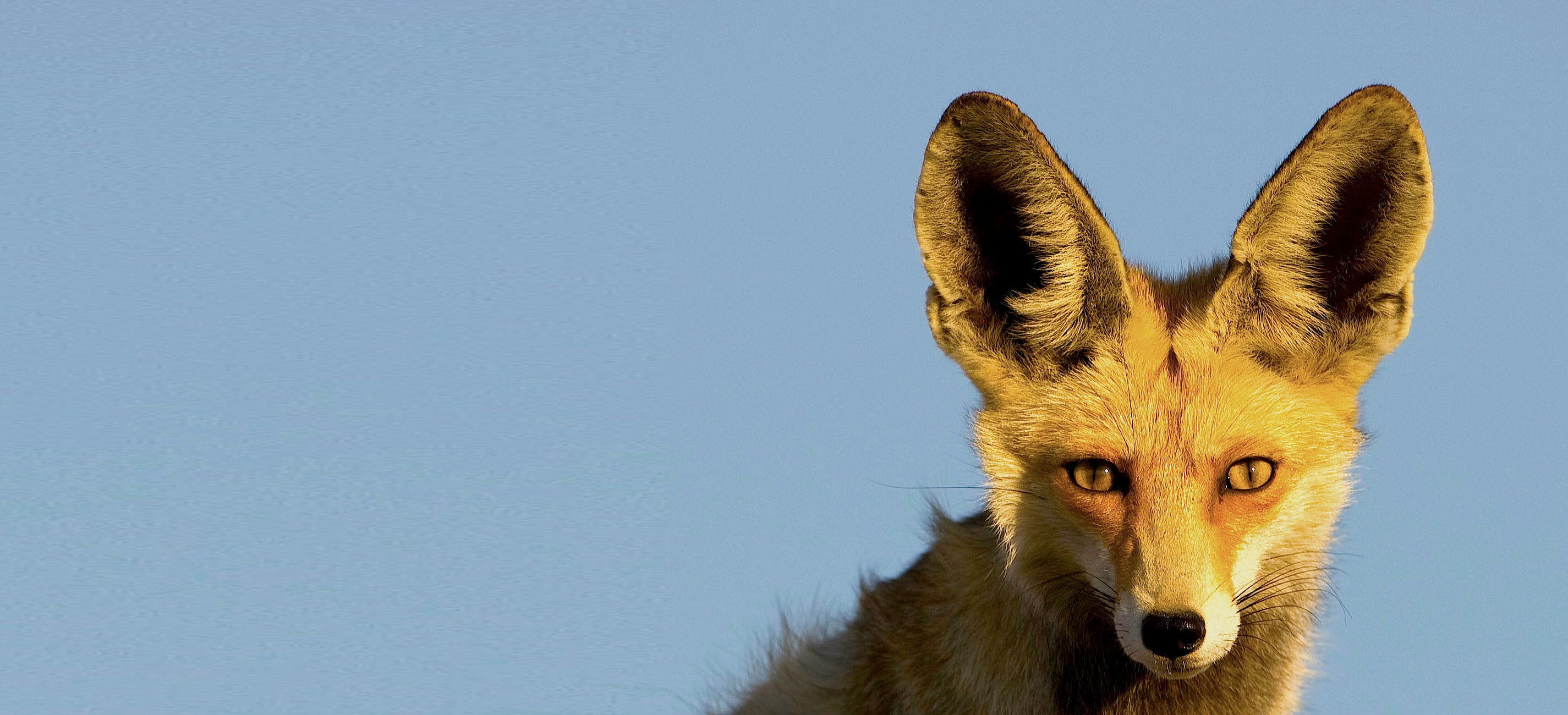
- Saudi Arabia has impressive biodiversity, including many species that are found only in the Kingdom
- To help identify conservation priorities, Aramco ecologists have developed a model to rank species according to several factors
- A list of 199 high-priority species has been identified through this model
A surprising diversity of wild animals and plants occurs in Saudi Arabia. In fact, 499 species of birds have been recorded in the Kingdom, along with 117 mammals, 107 reptiles, 266 corals, 1,230 fish, eight amphibians, and over 2,400 flowering plants.
Diversity of landscape
To better understand the biodiversity in the Kingdom, look to the diversity of its landscape. To the west, is the Red Sea, which contains by hundreds of sub-tropical islands and glorious coral reefs teeming with life.
Heading southwest are the prodigious ‘Asir Mountains, the wettest and coolest part of Saudi Arabia. These mountains have so many unique species of wildlife that they are formally listed as one of the world’s most important global biodiversity hotspots.
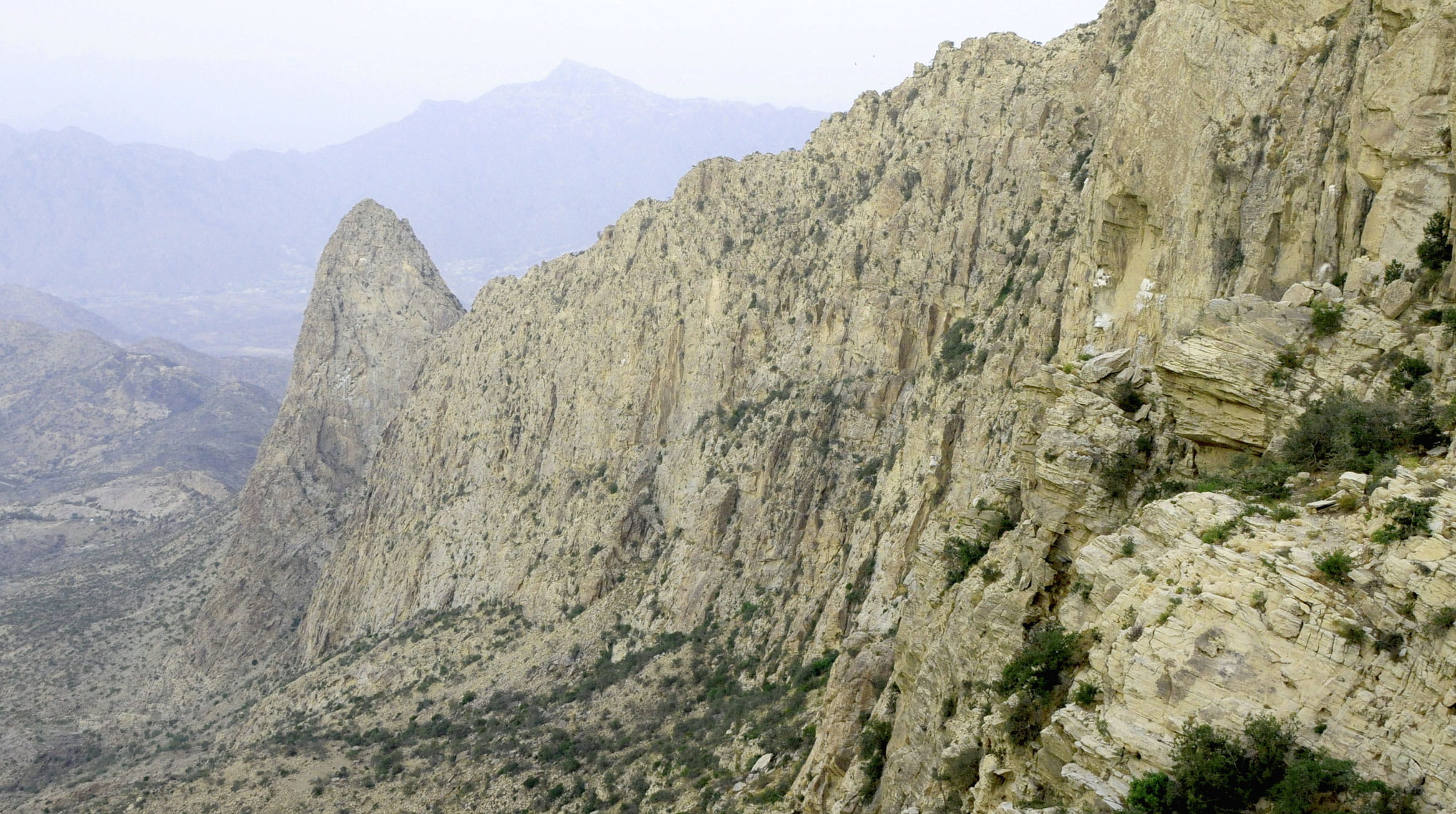
Saudi Arabia contains a diversity of habitat types each supporting distinct species. These magnificent cliffs at Tanomah in the ‘Asir mountains provide nesting habitat for Griffon Vultures and other birds.
Then there are the stony deserts of the central Arabian Shield. The scrublands are marked by Acacia-filled wadis. A single wadi may contain over 140 species of plants, many of which only occur in Arabia.
Following this, there are the vast sands of the Rub’ al-Khali in the south, the Great Nafud in the north, and the ad-Dahna desert. Even there, we find birds, reptiles, mammals, and plants that are adapted to life in one of the harshest ecosystems on the planet.
Finally, there are the Gulf coastal plains on the east coast, dotted with wetlands, coastal lagoons, and mangrove forests. The Arabian Gulf’s offshore coral islands support dense colonies of nesting seabirds and turtles.
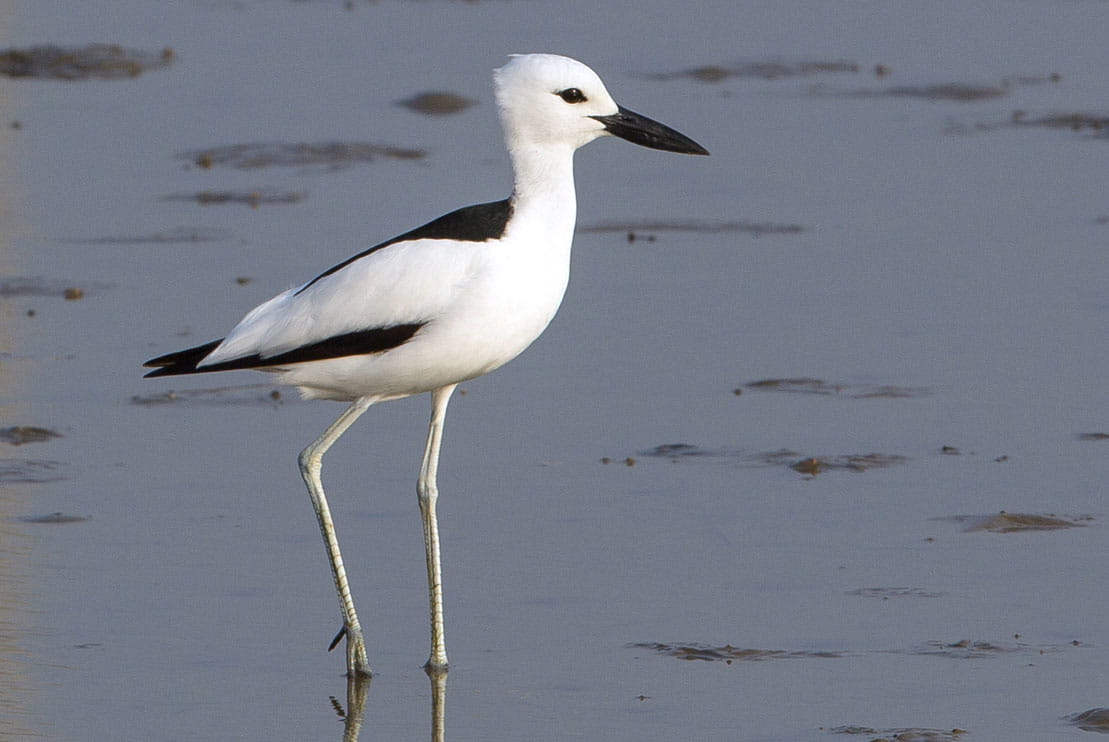
The impressive biodiversity of Saudi Arabia
Saudi Arabia’s biodiversity includes some of the most fascinating animals on earth, such as the Arabian Babbler, a group-living bird that displays social behavior as complex as groups of chimpanzees.
The biodiversity also contains some of the most unique animals on earth, with birds like the Hypocolius, Hamerkop, and Crab-plover, which are the only members of their respective families. They have no close relatives.
Saudi Arabia also contains some of the rarest animals on earth, such as the Sarso Island Racer, which is a snake that was discovered in the Farasan Islands off Jazan in 1964. This snake had never been seen before, or since.
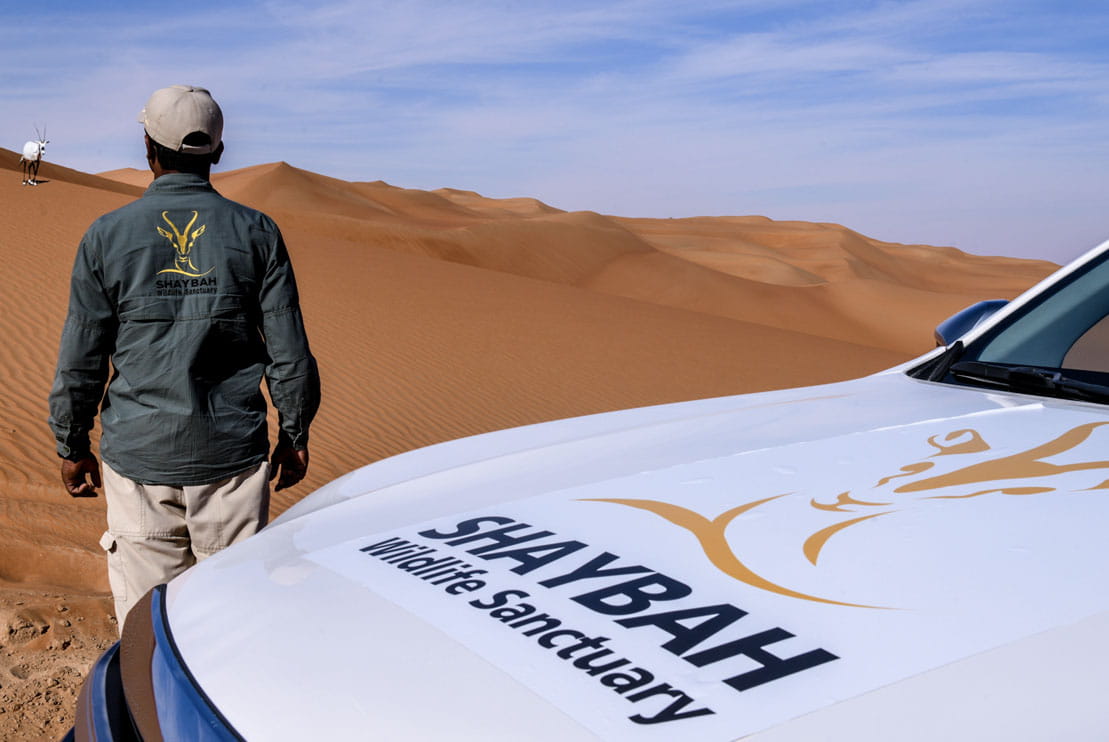
Conservation efforts at Aramco
Some of the best biodiversity in the Kingdom occurs within Aramco’s operating areas. The Company established a program of designating Biodiversity Protection Areas over our most valuable habitat.
As of 2021, 977 km2 of Aramco land has been designated a protected area, comprising 10 Biodiversity Protection Areas. These areas include deserts, mountains, wadis, grasslands, wetlands, coasts, and islands.
More than 500 species of plant and animal life are protected within these natural areas, including more than 55 species and subspecies that are native to the Arabian Peninsula and do not occur anywhere else.
Indeed, 30% of all of Saudi Arabia’s terrestrial mammal species have been recorded within the Company’s Abha protected area. The Abha protected area contains perhaps the best habitat for Philby’s Partridge, a bird that is unique to southwest Arabia.
Endangered species in Saudi Arabia
The number of endangered species across the world is increasing, and Saudi Arabia is no different. Around 33% of the Kingdom’s plant and animal species are formally listed as threatened with extinction, with perhaps 70% of the plant and animal populations decreasing.
For example, the Common Ostrich once roamed across much of the Arabian Peninsula, even entering the Rub’ al-Khali. But this enormous bird was hunted to extinction several decades ago.
Likewise, the Arabian Bustard once ranged across the western region of Saudi Arabia, but its numbers gradually dwindled, due to habitat loss and hunting, until it disappeared around 1993. Fortunately, a single bird was recorded on Farasan Island in 2020.
The Spotted Sandgrouse, a desert bird that frequently featured in ancient Arabic poetry, once occurred across most of the northern half of Saudi Arabia. By 1980, it began to disappear, and is now found only in two small patches near Yanbu’ and Haradh.
With a large number of species decreasing in number, it becomes a challenge to identify which ones to prioritize for conservation efforts and resources. Which species should ecologists help first?
Prioritizing biological conservation
To help answer that question, Aramco ecologists developed a scientific method for ranking the conservation priority of every animal species that lives in Saudi Arabia, excluding the marine life in the oceans. Each species was scored out of 100 according to several factors, such as:
- How endangered it is,
- How many individuals are left,
- Whether its numbers are increasing or decreasing,
- How much of the global population occurs in Saudi Arabia, and
- How unique it is both globally and within the Kingdom.
This creates an empirical score sheet that ranks every species from the highest conservation priority to the lowest (the top 20 high conservation priority species are shown in Table 1).
Saudi Arabia’s highest conservation priorities
By using this scientific scoring system, the highest conservation priority species in Saudi Arabia right now is a freshwater fish species called Arabian Bream. This fish was first discovered in 1983, but was not seen again until it was rediscovered in 2014 at Khaybar. It is critically endangered, and only found at one small dam in Saudi Arabia.
The next highest conservation priority animal is the ‘Asir Magpie, which can only be found in the juniper forest in the ‘Asir mountains of Saudi Arabia.
Aramco ecologists have used GIS modelling to map the remaining habitat of this highly endangered bird, and have discovered that its habitat has shrunk to 80 km2 due to development in the area. Perhaps only 100 pairs of this bird remain.
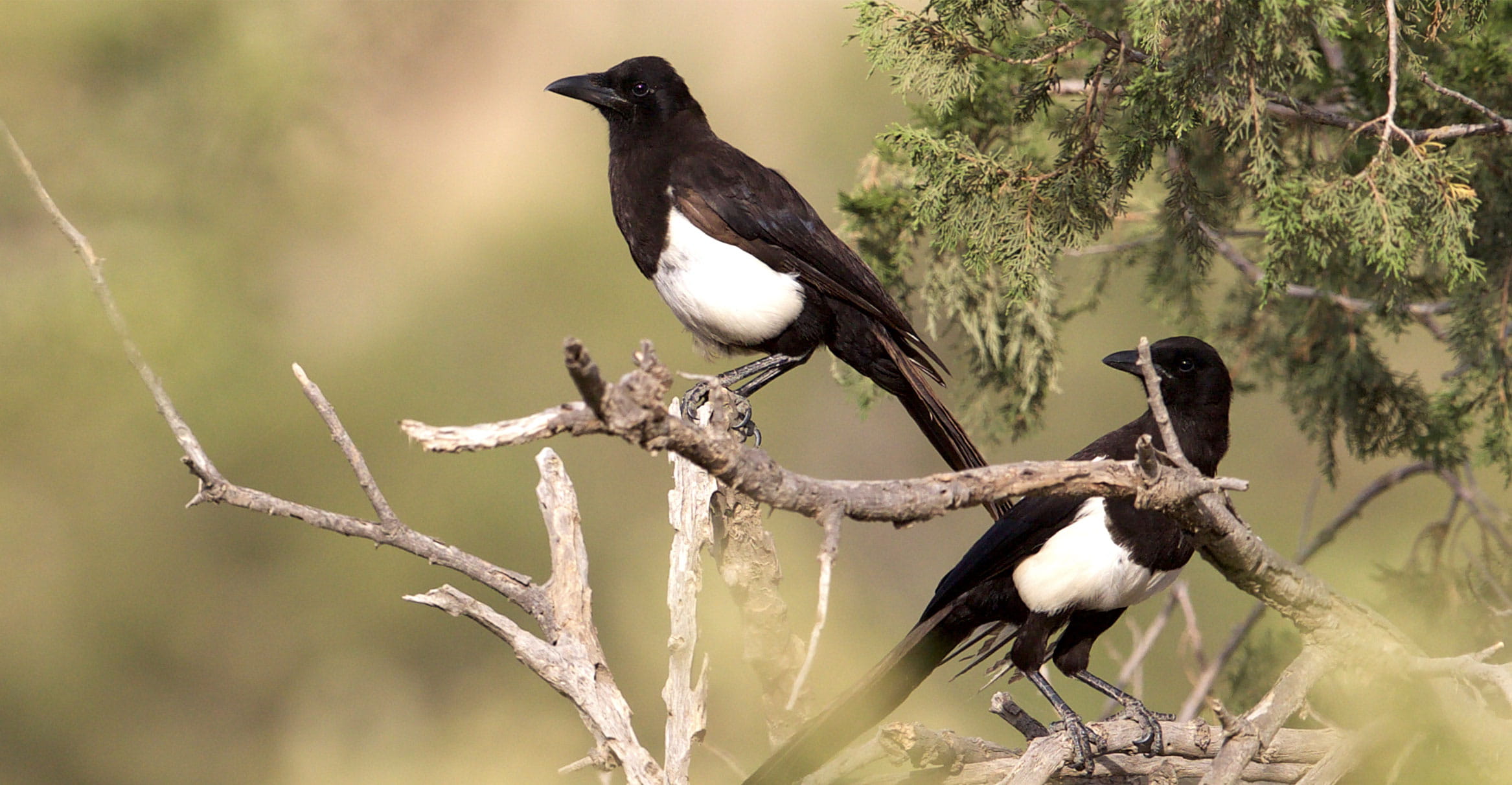
The Asir Magpie occurs in the Asir mountains and nowhere else on earth. This highly endangered bird is one of the highest conservation priority species in Saudi Arabia.
Continuing to protect
Most of the top 20 highest conservation priority species are small freshwater fish, reptiles, or birds that few people have heard of. This makes research initiatives and conservation efforts for these species even more important, in order to learn more about these species and better protect them.
Aramco continues its program of designating Biodiversity Protected Areas of its high-value habitat, to protect as many of Saudi Arabia’s precious plant and animal species as possible.
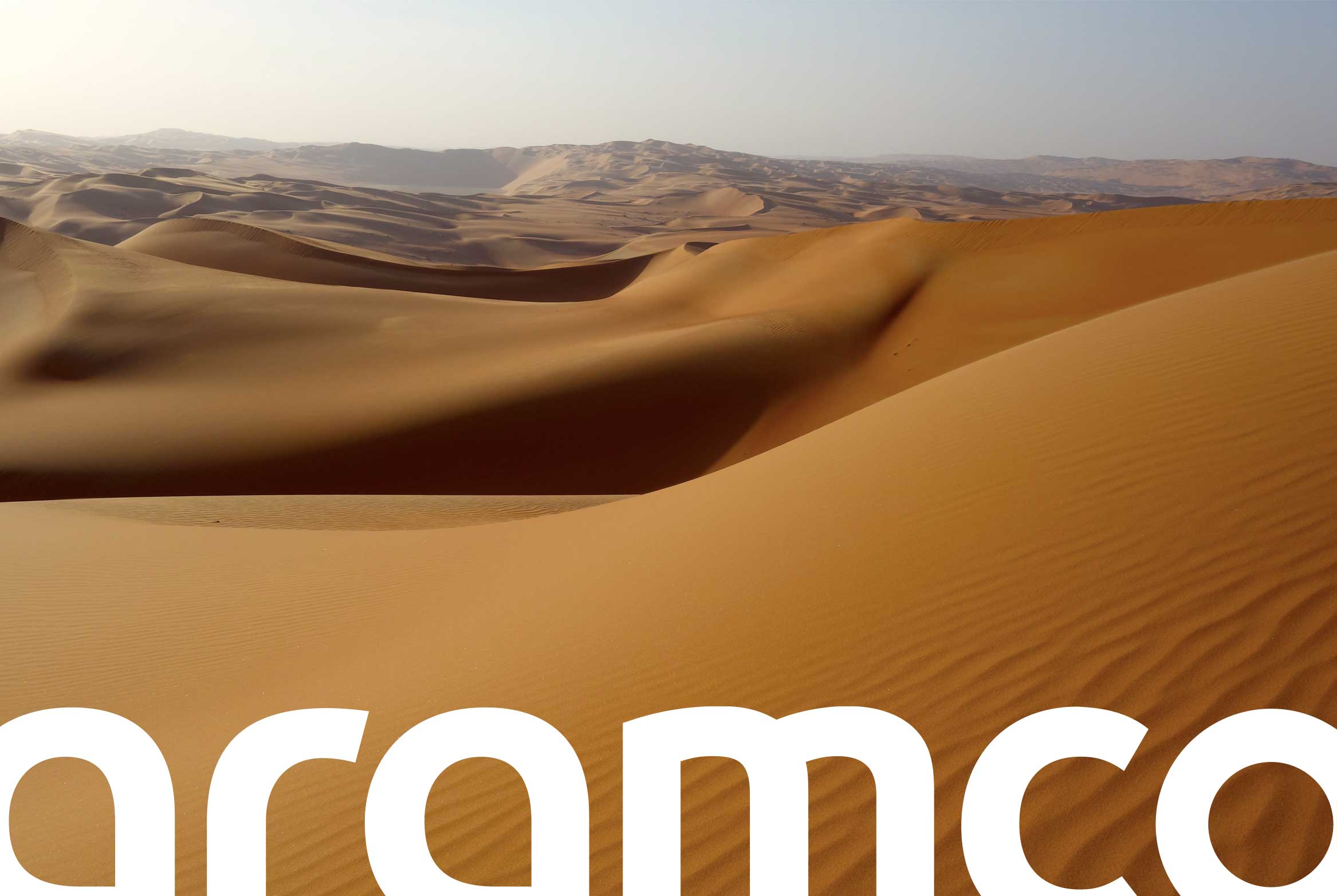
The Shaybah Wildlife Sanctuary protects some of the Rub’ al-Khali wilderness.
We conduct rigorous biodiversity surveys to ensure we meet our goal of having a net positive impact on biodiversity in all our new projects.
Table 1: The 20 highest conservation priority animal species in Saudi Arabia
| Rank | Common name | Latin name | Score | Type |
| 1 | Arabian Bream | Acanthobrama hadiyahensis | 88.3 | Freshwater fish |
| 2 | ‘Asir Magpie | Pica asirensis | 87.8 | Bird |
| 3 | Arabian Himri | Carasobarbus apoensis | 84.8 | Freshwater fish |
| 4 | Gasperetti’s Leafnose Snake | Lytorhynchus gasperetti | 81.2 | Reptile |
| 5 | Leviton's Cylindrical Skink | Chalcides levitoni | 80.5 | Reptile |
| 6 | Sarso Island Racer | Coluber insulanus | 77.3 | Reptile |
| 7 | Saudi Sand Gecko | Tropiocolotes wolfgangboehmei | 75.5 | Reptile |
| 8 | ‘Asir Garra | Garra buettikeri | 72.1 | Freshwater fish |
| 9 | Alfaraj's Gecko | Hemidactylus alfaraji | 71.9 | Reptile |
| 10 | Arabian Lotak | Cyprinion mhalense | 67.9 | Freshwater fish |
| 11 | ‘Asir Gecko | Hemidactylus asirensis | 65.6 | Reptile |
| 12 | Saudi Arabian Sand Lizard | Mesalina saudiarabica | 65.5 | Reptile |
| 13 | Yemeni Mouse | Myomyscus yemeni | 62.9 | Mammal |
| 14 | Basra Reed-Warbler | Acrocephalus griseldis | 62.0 | Bird |
| 15 | Socotra Cormorant | Phalacrocorax nigrogularis | 61.6 | Bird |
| 16 | Mount Elba Snake-eyed Lizard | Ophisops elbaensis | 61.4 | Reptile |
| 17 | Arabian Woodpecker | Dendropicos dorae | 60.8 | Bird |
| 18 | Saudi Fringe-fingered Lizard | Acanthodactylus gongrorhynchatus | 60.5 | Reptile |
| 19 | Yemen Warbler | Sylvia buryi | 60.2 | Bird |
| 20 | Arabian Gazelle | Gazella arabica | 59.9 | Mammal |
More from Elements
The material in this article is intended to be for general informational purposes only, and readers should not place undue reliance on the statements or opinions therein. Any information provided speaks only as of the date this content was published and Saudi Aramco undertakes no obligation to correct, update, or revise any statements or opinions made in or implied by this article.



